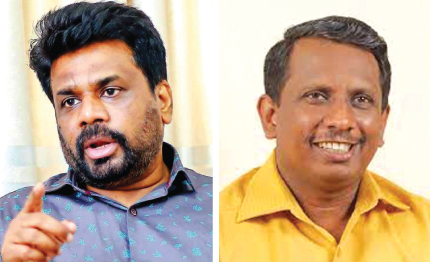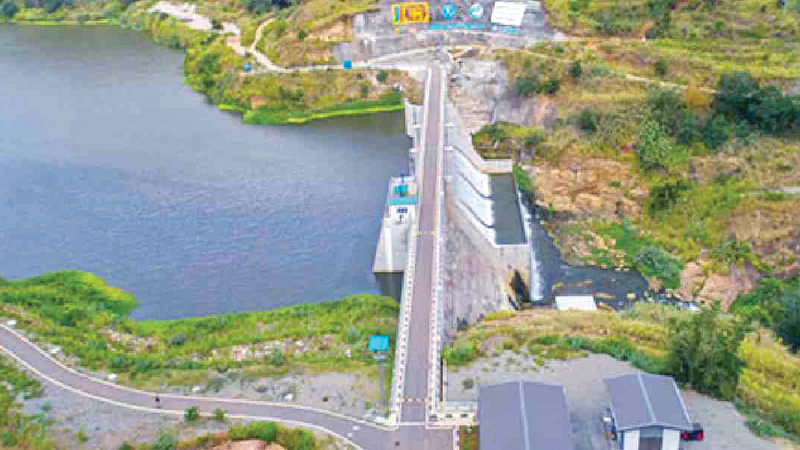In 1971, Rohana Wijeweera, the leader of the Janatha Vimukthi Peramuna (JVP), encouraged his followers to take up arms against the Government and instigate an insurrection. Despite his initial incitement of the youth to revolt, Wijeweera later distanced himself from responsibility for the uprising, attributing it to Loku Athula (former MP Athula Nimalsiri Jayasinghe) instead.
Before the April insurrection, Rohana Wijeweera addressed the final campaign rally of the JVP at Hyde Park ground in Colombo on February 21, 1971. During his speech, he said, “When the Police repression is unleashed against us, that will mark the beginning of the Sri Lankan insurrection.”
 During his speech, analysts observed that at one point, Rohana Wijeweera exclaimed, “Let Gajaba be an Aurora,” implying perceived support from the Government’s Armed Forces.
During his speech, analysts observed that at one point, Rohana Wijeweera exclaimed, “Let Gajaba be an Aurora,” implying perceived support from the Government’s Armed Forces.
Gajaba was a warship of the Ceylon Navy, while the Aurora famously fired the first shot against the Tzar regime in Russia’s October Revolution of 1917. However, despite consenting to the armed struggle, Wijeweera distanced himself from the aftermath of the insurrection’s defeat, a narrative that remains relevant today.
That day, Rohana Wijeweera distanced himself from the events of the ‘71 insurrection, shifting the blame to Loku Athula, similar to how Samantha Vidyaratne has now been made the scapegoat thus allowing JVP leader Anura Kumara Dissanayake (AKD) to wipe his hands clean from the Uma Oya incident.
The Cabinet Paper on Uma Oya was initially presented on January 26, 2005, by AKD, who served as the Minister of Agriculture, Livestock, Lands, and Irrigation at the time. This Ministry was largely controlled by the JVP, with Bimal Ratnayake as its Deputy Minister.
“The only viable solution is to use water from the Uma Oya to foster development in the arid southeastern region of Sri Lanka (particularly in the districts of Hambantota and Moneragala. The economic development approach for Hambantota and Moneragala districts has recently undergone a shift.
There is now consideration for diverting Uma Oya to Kirindi Oya as part of the newly promoted Ruhunupura development concept. Ruhunupura development entails transforming the Hambantota port into a modern facility in the area, constructing an international airport, and establishing an oil refinery in the Moneragala district.
The expectation is for a significant influx of ships navigating the Indian Ocean to dock at the Hambantota port, fostering a multitude of industrial activities, notably tourism. Projections indicate that by 2030, these new developments will necessitate approximately 100 metric cubic metres of water. Given the absence of a consistent water supply in the region, sourcing water from Uma Oya is perceived as the sole viable option to fulfill this demand. Therefore prioritising this project is imperative,”
This was AKD’s Cabinet Paper.
Stance
After AKD and the JVP left the Government, the JVP shifted its stance and began opposing the Uma Oya project. Samantha Vidyaratne not only resisted the project but also led the struggle against it. Through methods such as fasts, protests, and strikes, Vidyaratne mobilised the entire Uva region against the Uma Oya project. Despite gaining considerable attention for his efforts, it is suggested that Vidyaratne was made an unsuspecting sacrificial lamb by the JVP.
Vidyaratne rose to prominence within the JVP in recent years, posing a significant challenge to AKD. He garnered considerable popularity, particularly among rural communities and the youth, with rhetoric and speeches reminiscent of Rohana Wijeweera. However, those who were wary of his influence sidelined Samantha when he was tasked with focusing on the Uma Oya project.
It seems Lal Kantha has faced a similar fate to Samantha Vidyaratne. Samantha instilled fear by highlighting issues such as sinking houses and demolitions related to the Uma Oya project. This project, which aimed to harness hydroelectric power from the Pidurutalagala area and utilise it for irrigation in the Moneragala and Hambantota districts, became a focal point of controversy and opposition.
The Uma Oya multipurpose scheme aimed to contribute 120 megawatts to the national power grid through two phases while also addressing various other needs. It sought to provide water for extensive agricultural lands, particularly in the Moneragala and Hambantota districts, and to fulfill the drinking water requirements of urban centres such as Bandarawela.
One of the distinguishing features of the project was its use of underground tunnels to channel water, and notably, even the power generation facility was constructed underground. The US$ 500 million project was built with Iranian assistance and Iranian President Dr. Ebrahim Raisi visited Sri Lanka to inaugurate the project with President Ranil Wickremesinghe.
Broad objection
The JVP and later the National People’s Power (NPP) maintained opposition not only to the “Port City” project but also to the construction of expressways, among other development endeavours. Their stance indicated a broad objection to numerous projects, reflecting a consistent opposition to initiatives they deemed contrary to their interests or principles.
According to Prof. Jayadeva Uyangoda and Dr. Wickramabahu Karunaratne, Rohana Wijeweera lacked a profound understanding of Marxism. Additionally, Viraj Fernando and Anagarika Dharmasekara highlight that Wijeweera tended to isolate or dismiss individuals who posed critical questions within the party.
Journalist and Editor Victor Ivan (Podi Athula during his JVP days) notes that Wijeweera selectively targeted less questioning or impulsive members of the party, restricting access to certain books and fostering ignorance among those segments.
The modus operandi of the JVP appears to have persisted over time. Allegations suggest that some JVP MPs are covertly selling the car permits they receive under the pretext of refusing them. Those who publicly decline MP pensions reportedly end up benefiting from them. Several JVP figures have been implicated in such practices. Despite advocating against perceived abuses, some former JVP MPs still reside in MP’s residences, raising questions about consistency between rhetoric and actions within the party.
In 2014, the leader of the party, AKD made a significant statement by expressing willingness to apologise for the killings perpetrated by the JVP during the ‘season of terror’ (fear psychosis) in the late eighties. He acknowledged that these incidents should not have occurred.
AKD’s recent apology when questioned about the past killings by the JVP reflects a complex and contentious issue. While some may perceive it as an attempt to acknowledge past wrongs, others may view it as insufficient given the magnitude of the crimes committed.
However, this was negated by JVP frontline member Nalin Hewage’s controversial statement that all those killed by the JVP in 1988-89 were murderers, rapists, cattle thieves, robbers and other criminals.
The ongoing controversy surrounding the Uma Oya project has diverted attention away from such historical issues, with little response from figures like AKD or the JVP, who were previously vocal about other matters such as instigating opposition against projects like Uma Oya through figures like Samantha Vidyaratne.






